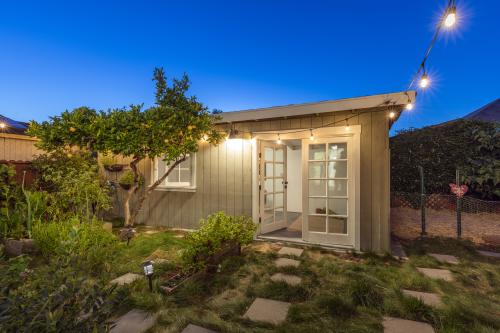Evidence continues to pile up revealing that housing affordability is getting worse, particularly for low-income households.[1] One of the latest examples, an analysis by Freddie Mac, examines rent changes for a sample of apartment buildings that the company financed at least twice between 2010 and 2016.[2] The bottom line: it wasn’t easy for poor families to find an apartment they could afford in 2010 – in fact, only 11.2 percent of unsubsidized apartments were affordable to very low income households – and matters have gotten worse. In 2016, only 4.3 percent of units still met that standard. The data from Freddie Mac suggest three other notable, troubling facts.
Affordability is worst for the poor, but middle-income families are also getting squeezed.
The Freddie Mac report focuses on the loss of units affordable to households making less than 50 percent of the median income within their metropolitan area. These households have the least resources, so by definition are most constrained in their housing choices, and policymakers (should) worry more about economically vulnerable families. But the data also hint that declining affordability isn’t just a problem for poor Americans. In the table below, I show the change in apartments that are affordable to median income households. Nationally, the share of apartments available to median income families dropped by five percentage points.
Table 1: Change in apartments affordable to median income households, 2010-2016
| State | Units | 1st financing | 2nd financing | Change |
| Source: Author’s calculations of Freddie Mac data. The sample is limited to multifamily buildings that Freddie Mac financed at least twice between 2010 and 2016, and measures changes in rents between those two financings. U.S. total includes states not shown. | ||||
| Arizona | 4,154 | 100.0% | 100.0% | 0.0% |
| California | 4,776 | 73.4% | 39.4% | 34.0% |
| Colorado | 5,128 | 100.0% | 99.6% | 0.4% |
| Florida | 13,197 | 96.0% | 79.8% | 16.2% |
| Georgia | 9,766 | 96.4% | 94.6% | 1.8% |
| Nevada | 3,564 | 99.7% | 99.5% | 0.2% |
| North Carolina | 5,061 | 100.0% | 99.7% | 0.3% |
| Texas | 28,533 | 97.8% | 95.2% | 2.6% |
| Washington | 3,262 | 91.7% | 93.7% | -2.0% |
| U.S. total | 97,061 | 95.8% | 90.6% | 5.2% |
Overall, 90 percent of apartments are still affordable to families in the middle of the income distribution, but the trend is worth noting. Even more important, there were very large declines in the share of apartments affordable to typical families in some states – see Florida and California. Which leads me to the next point…
If you aren’t rich, don’t move to California. Or maybe Florida either.
Not surprisingly, there are big geographic differences in housing affordability trends. (Freddie Mac’s report doesn’t dive deeply into geography, probably because of sample size. It only discloses state-level numbers, and then only for a few states where the company had the largest number of multifamily mortgages refinanced during this period, so the sample may not be representative). In addition to Florida and California becoming substantially less affordable to median income households, the report highlights Colorado, North Carolina, and Texas as states that saw the biggest declines in housing affordability for very low income households. The continuing divergence in housing costs across parts of the U.S. reinforces other geographic divides, such as employment growth.[3] Worryingly, some of the states (and cities) with the best prospects for job growth are already expensive, and are becoming increasingly hard for typical families – and typical workers – to afford.
In measuring affordability, rents are only half of the equation.
The U.S. Department of Housing and Urban Development’s standard definition for housing affordability, which Freddie Mac uses in its report, states that households should pay no more than 30 percent of their income on housing costs. This definition depends on both rents and incomes, and therefore, decreasing rental affordability (including at the state or metropolitan area level) could come from an increase in rent, a decrease in income, or differential rates of change in both. One of the strengths of Freddie’s underlying analysis is that it looks at rent changes for individual apartments. But the report only tells us the change in share of affordable units, not the changes in rents themselves.
From a policy perspective, it’s important to know what’s driving the change in affordability
From a policy perspective, it’s important to know what’s driving the change in affordability, because appropriate interventions may differ. If rents are increasing rapidly because of supply constraints or rising development costs, local governments might want to streamline the development process or relax zoning. By contrast, if data indicates that declining affordability mostly results from stagnant wages or declining working hours among low-skilled workers, then income supplements might be considered to be a more direct policy solution. Housing advocates and researchers often rely on standard affordability measures because they are a convenient shorthand to those in the field. Altogether, thinking carefully about how we measure affordability will help us better understand the underlying causes of the problem and design appropriate policy responses.
[1] http://www.jchs.harvard.edu/research/publications/americas-rental-housing-expanding-options-diverse-and-growing-demand
http://furmancenter.org/thestoop/entry/2017-national-rental-housing-landscape
[2] http://www.freddiemac.com/multifamily/pdf/rental_affordability_worsening.pdf
The GSEs’ multifamily portfolio may not be a representative sample of apartments, but the method is useful because it provides information on rent changes for the same apartment (constant quality), rather than observing changes in rent levels, which may reflect changes in the composition of the overall rental stock.
[3] https://www.nytimes.com/2017/10/24/business/economy/future-jobs.html?rref=collection%2Fsectioncollection%2Fbusiness&action=click&contentCollection=business®ion=rank&module=package&version=highlights&contentPlacement=10&pgtype=sectionfront







Commentary
Yet more evidence that housing affordability is getting worse
October 31, 2017